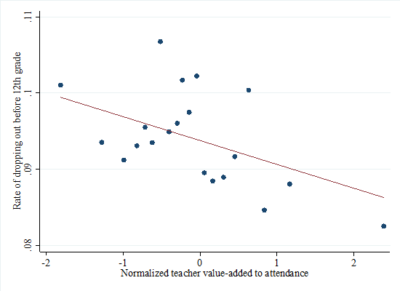Even if you know all about student engagement, these six tips might be new to you.

Student engagement is a hot topic these days because of its proven impact on graduation rates, school culture, and even academic achievement (although the data on this last one is not as strong one might think). Engagement is good. Engagement is also seen as key to improving student academic achievement. If you are focusing on engagement in order to improve academic achievement, then this article is for you.
This article shows you how you can easily double your impact by promoting engagement with a tool that is also proven to improve student academic achievement in and of itself: frequent in-class assessment for learning. Yes indeed, frequent assessments for learning are powerful tools for student engagement, too. Two birds, one stone. You like this idea? Read on! 🙂
Student engagement promotes lifetime achievement
Both experience and data tell us that – as a rule – engaged students achieve more. It is true for all students. Engagement is as important to fixing low graduation rates as it is to ensuring that high-achieving students stay curious and don’t become fixated on grades alone.
What drives engagement? Engagement is about relationships. In her article on early warning systems, Dr. Rebecca Sarlo notes that most students don’t graduate on time not because they don’t have goals, and not because they and their parents don’t value education. Rather, at-risk students overwhelmingly cite feelings that no adult cares about them as a person, or about their success, and that their peers don’t care either. In other words: engagement with learning happens or doesn’t happen because of the environment in the school and in the classroom.
Teachers can positively impact engagement, and these teachers have a measurable long-term effect

Source: Liu, Jing & Loeb, Susanna (2016). “Engaging Teachers: Measuring the Impact of Teachers on Student Attendance in Secondary School,” Working paper.
In a 2016 study published by the Brookings Institution, authors Jing Liu and Susanna Loeb found that high school teachers who are able to better engage their students (as measured by attendance) are able to do so consistently year over year. Also, higher engagement with these teachers leads to higher rates of graduation. Furthermore, the authors found that simply completing high school had measurable positive impact on lifetime achievement, even when test scores were held constant. So, engagement improves outcomes.
Does engagement improve grades and test scores?
Probably, depending on how engagement is fostered. Does it matter whether it does or not? That depends on how important grades and test scores are to you as a leader and/or teacher. But remember: why do we care about engagement? Because it is known to improve outcomes. If there were a way to ensure that your efforts to increase engagement in your school or classroom would also succeed in moving the needle on grades and test scores – quickly – would you do that thing? I hope so. Later we will see how to do it.
The Golden Rules of engagement
In his article Golden Rules for Engaging Students in Learning Activities, author Nicolás Pino-James, PhD lists five ways teachers can encourage student engagement: making learning activities meaningful, fostering a sense of competence, supporting autonomy, collaborative learning, positive teacher-student relationships, and mastery orientations (positioning learning as steps towards reaching a goal of learning, rather than simply seeking a reward such as a grade or approval from parents or peers).
Pino-James suggests a number of ways to achieve these means, and they are backed up by peer-reviewed research. I will return to these methods later in this article, but first I would like to bring things back to the reason why most educators who make student engagement a part of their strategy, school improvement plan, or response to intervention program do so in the first place.
Increased student engagement drives several important education goals, and reduces the effort needed to improve academic performance metrics.
For most educators, student engagement is important because it drives student learning, student agency, student empowerment, and even some kinds of student achievement. And while all of those things are important, for most educators the thing that counts for our jobs is that student engagement supports on-time graduation, attendance, and reduces the effort it takes to manage a classroom and … teach.
Fast-turnaround, frequent formative assessments drive student learning and achievement
Rapid and frequent formative assessments drive academic achievement. We are all familiar with the now-famous Black & William citation “…the practice of formative assessment produce[s] significant and often substantial learning gains. These studies range over age groups from 5‐year olds to university undergraduates, across several school subjects, and over several countries.” (Inside the Black Box by Paul Black & Dylan William). Would it be so surprising if one of the reasons for this was that these short assessments also generate engagement and agency among students? It shouldn’t be.
And now…
6 ways to promote student engagement with rapid, frequent formative assessments

One of my first exposures to the power of rapid classroom assessments (frequent formatives) to promote student engagement was through the Numbers Matter program at Carver High School. Numbers Matter, an instructional plan developed by Barbara Burke, was first implemented in a school with 100% free lunch, an on-time graduation rate under 70%, 95% of freshman students arriving behind grade level, and state test scores in the bottom half of the fifth quintile. Woo!
Numbers Matter changed everything for the teachers and students at Carver. Via the program students achieved over 100% improvement on the state test in the first year and a 70% improvement in the second year. The gains continue to mount to this day. A lot of Numbers Matter is about engagement, and the rest is about frequent formative assessments aligned to a pacing guide.
Let’s take a look at Dr. Pino-James’ six ways to foster engagement, and give them the ol’ formative assessment twist. Ready? Here we go!
#6 – Make learning activities meaningful.
Pino-James suggests engaging student by showing them how the material is relevant to real-life situations. But I’m not about to suggest you “use real-life examples in your tests.” I am not going to do that because there is more than one way to make something meaningful.
First, show the meaning in the goal: In Burke’s Numbers Matter, students are educated about the importance of their numbers, from their APGAR score as newborns, to their 1/4 mile sprint time, yards rushed, baskets and assists, SAT/ACT score, to their blood pressure as adults. Numbers Matter demonstrates to students that numbers mean something, including their quiz scores.
But here’s where I think assessment can really connect and engage students: In Numbers Matter, each class is engaged in a friendly competition to see which one racks up the highest quiz scores (or the most improved scores) each week. When each student has a chance to get tutoring and re-take a quiz to raise the class average, this kind of friendly competition ticks all the ‘mastery learning’ boxes. And with the winning class getting pizza for lunch on Monday, or just bragging rights, the meaning is built-in!
#5 – Foster a sense of competence
When students have the chance to instantly see how they did on a quiz, and get the chance to tell a teacher, tutor, or classmate why they answered the way they did, it gives them a sense that they are in control. When students then have the chance to get help from a tutor, or from peers, then re-take the quiz and contribute to the class’s overall achievement, it gives them a sense of accomplishment and competence. Recalling Sarlo’s article on early warning systems, in which she cited a study on engagement, this kind of analysis and conversation with teachers builds students’ sense that the adults in the building care about them. And that builds engagement while also building academic accomplishment.
There’s also an opportunity for peer-to-peer engagement benefit. In Numbers Matter, individual achievement contributes to team achievement. This is like in team sports, a place where students learn leadership and self-worth along with teamwork. Rapid formative assessments can be used to teach the same values and instill the same sense of competence and value.
#4 – Support autonomy
How does one support autonomy in learning? I don’t need to tell you that autonomy does not mean saying “do it yourself.” Nope! Supporting autonomy means showing students they are empowered to make their own decisions and that when they do, you will help them achieve the goals embedded in those decisions. Autonomy is about engagement. How do you support autonomy with assessments? Is that crazy? Not at all: Frequent formative assessment for learning is often paired with ‘mastery learning,’ where students work with teachers to achieve self-defined goals over the course of a semester or other time period. Whether you call it ‘mastery learning’ or just ‘learning,’ frequent formatives give both students and teachers rapid feedback free from the stress of a summative exam that will count towards a final grade. Rather, they are meant as guideposts along the way to a goal. Each formative assessment is another chance for the student to show the teacher – and herself – that the most important thing for them is the process of their own self-directed learning, not the score on the quiz.
#3 – Foster collaborative learning
Without belaboring the point, frequent formatives are about collaboration when they are done right. What does that mean? It means teachers and tutors giving students the opportunity to tell them why they answered a quiz the way they did, and what they could do to fill the gaps in their understanding. And, as I mentioned, in a team environment like Numbers Matter, learning becomes something cool that all students can get behind, something with which they want to help each other, because if they can win academically as a team they can get meaningful rewards as a team. This opens the door to truly effective (and fun) small group learning and peer-to-peer tutoring, which further reinforces student agency, self-worth, and engagement.
#2 – Nurture positive teacher-student relationships
The simple act of interacting with a student on the topic of their own mastery of material, the simple act of listening, and the simple act of showing a student that you don’t care about the result they get nearly as much as you care about the fact they are trying, all foster a relationship that is positive, affirming, and effective at increasing student engagement. Remember Sarlo’s article on early warning systems that I mentioned at the top of this article? Engagement depends more on students’ sense that adults (for example teachers) care about them as people, and not just as students. Read that as “I am more than just a grade” and you can see why simply engaging with students on the ‘why’ and ‘how’ of their formative assessment response is wholly different – and more engaging – than handing back a paper with a grade on it … even when that grade is an “A+”.
#1 – Provide mastery orientation
Once again, Numbers Matter is a good example of mastery learning and teaching because it doesn’t shy away from the facts – the final number does matter – while at the same time creating strong feelings of engagement from students. It does this through the process of teamwork, which naturally values practice, process, and improvement, without falsely diminishing the importance of the end goal: a high number. And, you guessed it, frequent, rapid in-class formative assessments are perfect vehicles for practice and improvement, while simultaneously providing a number that moves as students improve. Boom!
In Conclusion…
Do more rapid frequent formatives! Consider adopting team-oriented learning modalities, and absolutely, definitely, foster student engagement using Pino-James’ six Golden Rules of student engagement. If you want to learn more about Numbers Matter, you can read about it here.
Need a technology to help you manage all those rapid assessments and give you instant turnaround time? Here’s a guide to help you decide.


